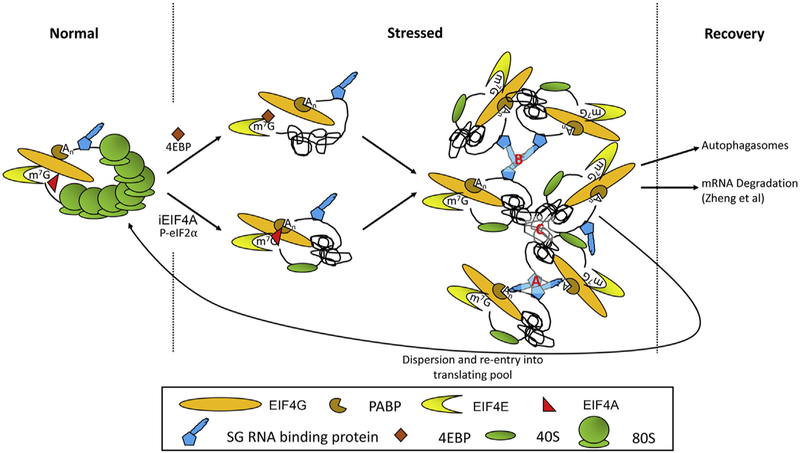Fig. 1.
General features of acute stress granules. During unstressed conditions, mRNAs generally exist in a complex with ribosomes and translation initiation factors, as well as RNA binding proteins that stabilize the mRNA and promote its translation. During stress conditions, the cap-binding complex is disassembled or 40S ribosomes are stalled within the 5′UTR. Stress promotes disassembly of the cap-binding complex or inhibits 40S scanning via activation of 4EBPs, inhibition of EIF4A activity (iEIF4A), or inactivation of eIF2 by promoting eIF2α phosphorylation. Bound 80S ribosomes present within the open reading frame run off the mRNA under these conditions leaving exposed mRNA that collapses onto itself and is subject to RNA folding. At this point, RNA binding proteins also associate with the mRNA and the resulting complexes assemble into SG dependent on specific (A) and non-specific (B) protein:protein interactions requiring globular and disordered domains, respectively, as well as RNA:RNA interactions (C) resulting from free mRNA.

